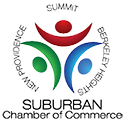Achieving Peak Efficiency: Innovative Tips to Optimize Your Business Workflows
In today’s fast-paced business environment, efficiency is king. With the constant evolution of technology and the increasing complexity of operations, optimizing workflows has never been more crucial. Imagine transforming your business into a well-oiled machine that not only meets your goals but also soars above and beyond them. This is not a distant dream but an achievable reality with the right strategies and tools. From harnessing the power of artificial intelligence to leveraging cutting-edge project management frameworks, this article will walk you through actionable insights designed to fine-tune your workflows.
Enhance Decision-Making with AI and Predictive Analytics
Harnessing artificial intelligence can greatly improve your decision-making processes by offering predictive analytics and nuanced insights. By leveraging sophisticated AI technologies that analyze real-time data and customer behavior, you gain the ability to make more informed and timely business decisions, minimizing risks and optimizing outcomes. What’s more, AI systems tailored to specific business needs can set you apart from competitors by fostering innovation and creating strategic advantages.
Streamline Operations with a Document Management System
Implementing a robust document management system (DMS) is essential for maintaining efficient business operations. Establishing clear folder and file structures, along with version control and selective user permissions, ensures that your documents are organized and secure. Saving documents as PDFs enhances their accessibility and reliability across various devices and platforms. Furthermore, using an online tool allows you to effortlessly convert documents to PDFs by simply dragging and dropping files. Check out this helpful site for more information.
Visualize Success with Project Management Tools
To optimize your workflows and enhance efficiency, consider leveraging visual project management tools such as Gantt charts and Kanban boards. These tools allow you to graphically prioritize and monitor tasks, providing a clear overview of deadlines, dependencies, and progress. For example, Gantt charts can highlight overlapping deadlines and task dependencies, helping you keep track of crucial milestones across multiple projects. Similarly, Kanban boards enable you to organize tasks by status, simplifying the process of moving tasks through different stages until completion.
Define Roles Clearly to Maximize Output
Establishing clear roles and responsibilities within your organization is essential to ensure efficiency and prevent duplication of efforts. When each team member knows their specific tasks, it minimizes confusion and allows for smoother collaboration. This clarity helps allocate resources more effectively, reducing waste and ensuring that projects are completed on time. It also fosters accountability, as individuals can focus on their duties without overlap or unnecessary interference. Ultimately, clear roles contribute to a more organized and productive workplace, optimizing the use of time and skills.
Identifying and Eliminating Workflow Bottlenecks
To ensure your business operates smoothly and efficiently, you should consistently review and analyze performance data to pinpoint bottlenecks and areas for improvement. By regularly examining performance metrics after optimizations, you can confirm that issues have been resolved and detect any new bottlenecks that may arise. Using performance monitoring dashboards and reports facilitates ongoing analysis, allowing you to track progress and validate enhancements effectively. This approach not only keeps your system aligned with performance goals but also identifies further opportunities for optimization.
Leveraging Data Analytics for Workflow Optimization
By harnessing the power of data analytics, you can make well-informed decisions to enhance your workflows, ultimately boosting efficiency and effectiveness. This approach involves using real-time data and insights to identify and rectify bottlenecks, streamline processes, and allocate resources more judiciously. For example, in the healthcare sector, data analytics can optimize staff scheduling by analyzing historical patient admission patterns, ensuring adequate staffing during peak times. Similarly, in financial services, real-time transaction analysis can detect and prevent fraud swiftly.
Cultivating a Feedback-Friendly Environment
Encouraging a feedback culture in your workplace can significantly enhance operations by allowing team members to suggest valuable improvements. By establishing regular feedback practices, you create an open atmosphere that promotes continuous dialogue and prevents issues from festering. Research shows that companies with robust feedback cultures are 3.6 times more likely to be top performers in their industry, highlighting the tangible benefits of this approach. Implementing diverse feedback channels is a crucial step to ensure every team member feels comfortable sharing their insights.
Transforming your business into an efficient powerhouse requires strategic planning, technological innovation, and a commitment to continuous improvement. When various optimization tools and methods come together, they create a streamlined operational flow. The journey of improvement is ongoing, so it’s important to stay agile and receptive to new trends and feedback. By blending technology with human insight, your business can exceed its goals and set new standards. This approach will position your company as a leader in efficiency and innovation within your industry.
Elevate your business and unlock fresh opportunities by becoming a member of the Suburban Chamber of Commerce today! Let’s grow together and thrive.
